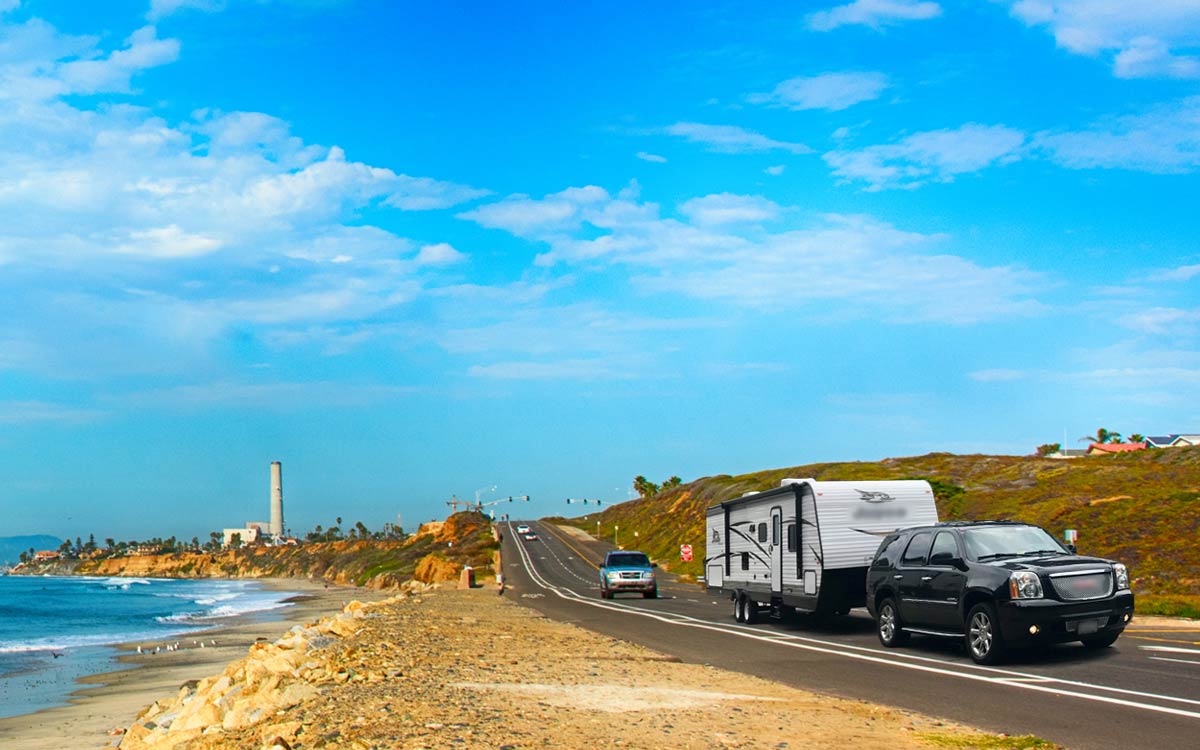
When planning a summer drive in remote areas, you want to be in safe hands. This guidance is brought to you by the Law Offices of Kyle E. Koester, a firm with a wealth of experience in personal injury law. The firm, based in Woodstock, GA, and serving surrounding areas, was founded on the principles of vigilance, preparedness, and safety, making it a leading voice on this topic. Its managing attorney, Kyle Koester, specializes in personal injury law, giving him a unique insight into the risks associated with driving in remote locations, especially during the summer months.
Before you embark on your journey, it’s vital to ensure your vehicle is in optimal condition. This includes checking systems such as air conditioning, brakes, and tire pressure. You should also pack essentials like a first aid kit, map, compass, and plenty of food and water. Staying hydrated and avoiding the health risks associated with summer heat is also crucial. Be aware of potential hazards such as wildlife and unpredictable weather conditions.
Always inform someone about your planned route and keep a reliable communication device at hand. As the Law Offices of Kyle E. Koester would emphasize, the more prepared you are, the safer your journey will be.
Key Takeaways
- Prepare your vehicle for the summer heat by checking the air conditioning, coolant levels, and tire condition.
- Carry essential items like a first aid kit, non-perishable food, water, and a reliable communication device.
- Stay hydrated, take regular breaks in shade, and wear light-colored, loose clothing to stay cool.
- Plan your route, keep an emergency kit, and inform someone of your travel plans to navigate remote areas safely.
- Monitor weather conditions, be alert for wildlife encounters, and know how to handle emergencies.
Understanding Remote Area Risks
When you’re driving in remote areas during summer, it’s crucial to grasp the unique risks that accompany such terrain and weather conditions. You’re not simply dealing with the typical road hazards; there are additional factors at play.
For starters, remote areas often lack cell coverage, so if you run into trouble, you can’t just pull out your phone and call for help. You’re on your own, and self-reliance is key. Additionally, these areas are frequently less populated, meaning fewer passers-by to offer assistance.
The summer heat, too, poses its own challenges. It can lead to dehydration, which in turn can cause dizziness, fatigue, and impaired judgment – not exactly what you want when you’re exploring unfamiliar roads. Furthermore, the heat can lead to asphalt softening or even melting, making the roads slippery and tricky to manage.
Wildlife is another consideration. Animals are more active in summer, and in remote areas, encounters with them are more likely. A collision with a large animal can cause significant damage to your vehicle, and even injury to you.
Preparing Your Vehicle for Summer
Having understood the risks tied to summer drives in remote areas, it’s time you prepare your vehicle accordingly to guarantee a safe and hassle-free journey.
Start by checking your car’s air conditioning system. A vital AC system is important to keep you cool and comfortable during long drives in hot weather.
Next, check your vehicle’s coolant and fluid levels. These fluids are essential for your car to function properly under the scorching summer heat. Your car’s oil should also be checked and replaced if necessary. Old oil can cause your engine to overheat and break down, a situation you definitely don’t want to encounter in a remote area.
Your car’s tires also need special attention. High temperatures can increase the pressure within your tires, leading to a blowout. So, it’s important to frequently check your tire pressure and tread. Don’t forget to inspect your car’s battery. Heat can shorten a battery’s life, causing it to fail suddenly.
Lastly, make sure your vehicle’s brakes are in good condition. A brake failure in a remote area could be disastrous. These steps will help you prepare your vehicle for summer and enable a safer journey.
Essential Items to Pack
Now, let’s tackle your travel checklist and discuss the essential items you should pack for a summer drive in remote areas. The right preparation can make all the difference when you’re far from civilization, ensuring you’re ready to handle whatever the journey throws your way.
- First Aid Kit: No matter where you’re headed, a thorough first aid kit is a must. Include bandages, antiseptic wipes, tweezers, medical tape, pain relievers, and any personal medications. You never know when you might need to treat a minor injury.
- Map and Compass: While technology is great, don’t solely rely on GPS. In remote areas, you could lose signal. A traditional map and compass can be your lifeline to find your way back to safety.
- Food and Water: Pack non-perishable food items and plenty of water. We’ll discuss more about hydration and staying cool in the next section.
- Multi-tool: A sturdy multi-tool can help you in numerous situations. Look for one that includes a knife, screwdriver, can opener, and pliers.
Staying Hydrated and Cool
As you’ve packed your food and water, remember that keeping your body hydrated and maintaining a cool temperature are key to a safe and comfortable journey in the summer heat. It’s not just about quenching your thirst. Hydration is vital for maintaining focus and energy, and it also helps regulate your body temperature. When you’re dehydrated, you’re more prone to fatigue, dizziness, and even heat exhaustion – all of which can be hazardous on the road.
Make sure you’ve got plenty of fresh water with you and take regular sips throughout the journey, even if you don’t feel thirsty. Pack a cool box with ice packs to keep drinks and snacks chilled. This can also serve as a handy source of cool relief if you start to overheat.
Remember to park in the shade whenever possible and use sun shields on your windows when you’re parked. Wearing light-colored, loose-fitting clothes can also help keep you cool. Finally, don’t forget to apply sunscreen, especially on areas like your arms that may be exposed to the sun as you drive. Even inside your car, you can get sunburned. Staying hydrated and cool will make your journey safer and more enjoyable.
Navigating Remote Areas Safely
When it comes to moving through remote areas safely, it’s crucial to map out your route carefully and stay conscious of your surroundings at all times. Be mindful of potential hazards and take steps to mitigate them.
- Plan your route: Before you leave, research your route thoroughly. Use maps, GPS, and local information to create a detailed plan. It’s also wise to plan for alternative routes in case the original one becomes impassable.
- Check weather forecasts: Weather conditions can change rapidly in remote areas. Check the forecast and plan accordingly. If storms or extreme heat are predicted, it might be safer to delay or reroute your trip.
- Maintain your vehicle: Keep your vehicle in top condition. This includes regularly checking tire pressure, oil levels, and ensuring your spare tire is in good shape.
- Carry essential supplies: Pack enough water, food, and basic survival gear. Also, carry a fully charged phone and a portable charger, so you can call for help if needed.
With these precautions, you’ll be better prepared to navigate remote areas safely. Remember, your safety is paramount. Don’t take unnecessary risks and always inform someone of your plans and route.
Handling Emergency Situations
Despite your best efforts, emergencies can strike in the midst of a drive through remote areas, so it’s crucial you’re ready to handle such situations effectively. Mechanical failures, medical emergencies, or weather-related incidents are common issues you may face.
Firstly, make sure you’ve got a well-stocked emergency kit in your vehicle. This should include water, non-perishable food, a first-aid kit, flashlight, blankets, and essential tools for minor vehicle repairs. You’ll also want a reliable communication device, preferably a satellite phone, as cell service can be spotty or non-existent in remote areas.
If your car breaks down, don’t panic. Stay with your vehicle as it provides shelter and is easier for rescuers to spot. Use your emergency supplies while waiting for help. If you’re lost, conserve your phone’s battery and use it sparingly.
In case of a medical emergency, use your first-aid kit to stabilize the situation until help arrives. Remember, it’s always better to prevent an emergency than to manage one. So, make certain your vehicle is in top shape before your journey, keep an eye on the weather, and drive responsibly.
Protecting Yourself From Wildlife
You’ll also need to be prepared for potential encounters with wildlife, which can pose a significant risk in remote areas. Animals crossing roads or appearing suddenly can lead to dangerous situations. Here are some tips to keep you safe:
- Stay Alert: Always keep your eyes on the road and the surrounding area. Animals, especially larger ones like deer or bears, can appear suddenly. It’s important to react quickly to avoid a collision.
- Use High Beams: When driving at night, use your high beams whenever possible. They’ll illuminate a wider area and make animals easier to spot.
- Honk if Necessary: If you see an animal on or near the road, honk your horn. The noise may scare it away.
- Don’t Swerve: If an animal jumps out in front of your car, don’t swerve to avoid it. This can cause you to lose control or veer into oncoming traffic. Instead, try to brake in a controlled manner.
Frequently Asked Questions
How Can I Stay in Touch With People When There Is No Cell Service in Remote Areas?
You’re concerned about staying connected without cell service. It’s smart to invest in a satellite phone. They’re not affected by typical cell tower limitations. Also, consider a personal locator beacon for emergencies.
What Are Some Tips for Handling Vehicle Breakdowns in Isolated Locations?
When dealing with vehicle breakdowns in isolated areas, you’ll want to have a well-stocked emergency kit. It’s important to maintain your car regularly. Don’t panic, stay with your vehicle, and signal for help effectively.
What Should I Do if I Get Lost in a Remote Area?
If you’re lost in a remote area, don’t panic. Stay with your vehicle, it’s easier to spot. Use your phone’s GPS if available. If not, signal for help. Always let someone know your route beforehand.
How Do I Protect Myself From Sunburn or Heatstroke While Driving?
To protect yourself from sunburn or heatstroke while driving, always wear sunscreen. Keep the car’s AC on, hydrate frequently, wear light-colored clothing, and take regular breaks in shaded areas to cool off.
What Are Some Precautions to Take When Traveling With Children or Pets in Remote Areas During Summer?
When traveling with children or pets, you should always pack additional water, snacks, and sunblock. Don’t overlook a first-aid kit. Make sure your vehicle’s air conditioning functions properly to prevent overheating. Finally, never leave kids or pets in a parked car.
Conclusion
So, as you gear up for your summer adventure on remote roads, always remember the importance of understanding the risks, prepping your car, packing smart, staying cool and navigating wisely.
Be prepared for emergencies and remain vigilant for wildlife. Follow these tips for not just a survival guide, but for a truly enjoyable journey.
However, in the unfortunate event of a car accident, don’t hesitate to contact the Law Offices of Kyle E. Koester, LLC for a free car accident injury consultation. With over 5 Million won in settlements for clients, you can trust Koester Legal to be on your side.
Travel safely, savor the journey, and let the summer road lead you to extraordinary places.


